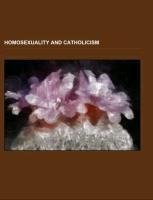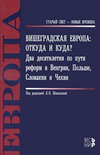
Homosexuality and Catholicism
Source: Wikipedia. Pages: 32. Chapters: Ada Maria Isasi-Diaz, Alfredo Ormando, Catholics United, Courage International, David Berger (theologian), DignityUSA, Gay bishops, Homosexuality and Roman Catholicism, Homosexuality and Roman Catholic priests, Instruction... Viac o knihe
Produkt je dočasne nedostupný
14.87 €
bežná cena: 16.90 €
O knihe
Source: Wikipedia. Pages: 32. Chapters: Ada Maria Isasi-Diaz, Alfredo Ormando, Catholics United, Courage International, David Berger (theologian), DignityUSA, Gay bishops, Homosexuality and Roman Catholicism, Homosexuality and Roman Catholic priests, Instruction Concerning the Criteria for the Discernment of Vocations with regard to Persons with Homosexual Tendencies in view of their Admission to the Seminary and to Holy Orders, James Alison, Jeannine Gramick, Liberal Catholic Church, Ministry to Persons with a Homosexual Inclination, Moral theology of John Paul I, New Ways Ministry, On the Pastoral Care of Homosexual Persons, Rainbow Sash Movement, Saints Sergius and Bacchus, Saint Sebastian, Santa Muerte, The Church and the Homosexual, Thomas Gumbleton. Excerpt: Santa Muerte, Spanish for Saint Death, is a sacred figure and feminine skeletal folk saint venerated primarily in Mexico and the United States. As a figure made holy by popular belief, the saint of death developed through syncretism between Mesoamerican indigenous and Spanish Catholic beliefs and practices. Santa Muerte, the name in Spanish, literally translates to "Saint Death" or "Holy Death". Since the pre-Columbian era Mexican culture has maintained a certain reverence towards death, which can be seen in the widespread commemoration of the syncretic Day of the Dead. Elements of that celebration include the use of skeletons to remind people of their mortality. The worship is condemned by the Catholic Church in Mexico as invalid, but it is firmly entrenched among Mexico's lower working classes and various elements of society deemed as "outcasts". Santa Muerte generally appears as a female skeletal figure, clad in a long robe and holding one or more objects, usually a scythe and a globe. Her robe can be of any color, as more specific images of the figure vary widely from devotee to devotee and according to the rite being performed or the petition being made. As the worship of Santa Muerte was clandestine until the 20th century, most prayers and other rites have been traditionally performed privately in the home. However, for the past ten years or so, worship has become more public, especially in Mexico City after Enriqueta Romero initiated her famous Mexico City shrine in 2001. The number of believers in Santa Muerte has grown over the past ten to twenty years, to several million followers in Mexico, the United States, and parts of Central America. Santa Muerte has similar male counterparts in the Americas, such as the skeletal folk saints San La Muerte of Argentina and Rey (King) Pascual of Guatemala. Mictlantecuhtli, the Aztec god of death.The precise origins of the worship of Santa Muerte are a matter of debate, but it is most likely a syncretism between Mesoame
- Vydavateľstvo: Books LLC, Reference Series
- Formát: Paperback
- Jazyk:
- ISBN: 9781155358840


 Anglický jazyk
Anglický jazyk 




 Nemecký jazyk
Nemecký jazyk 
 Ruský jazyk
Ruský jazyk 



